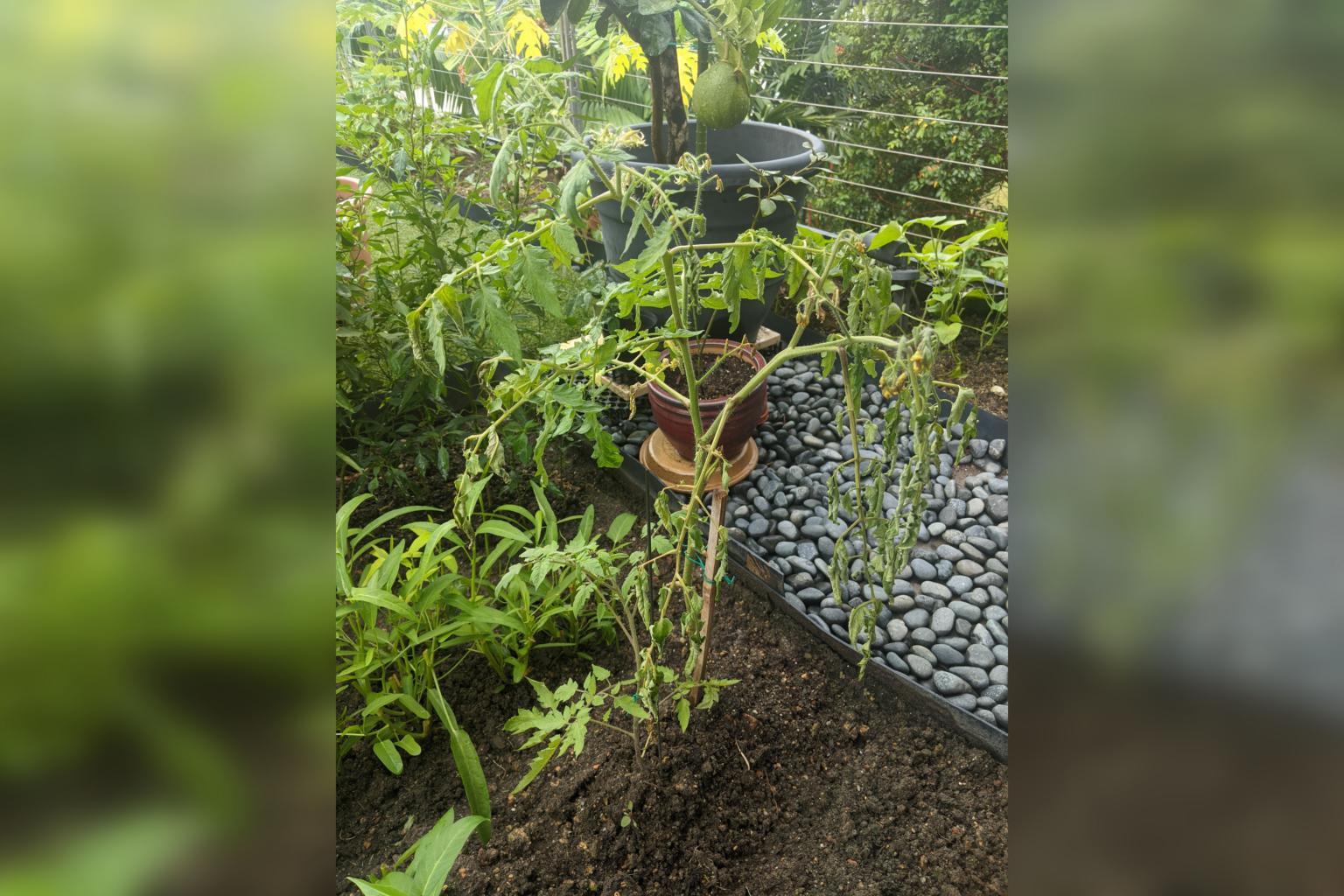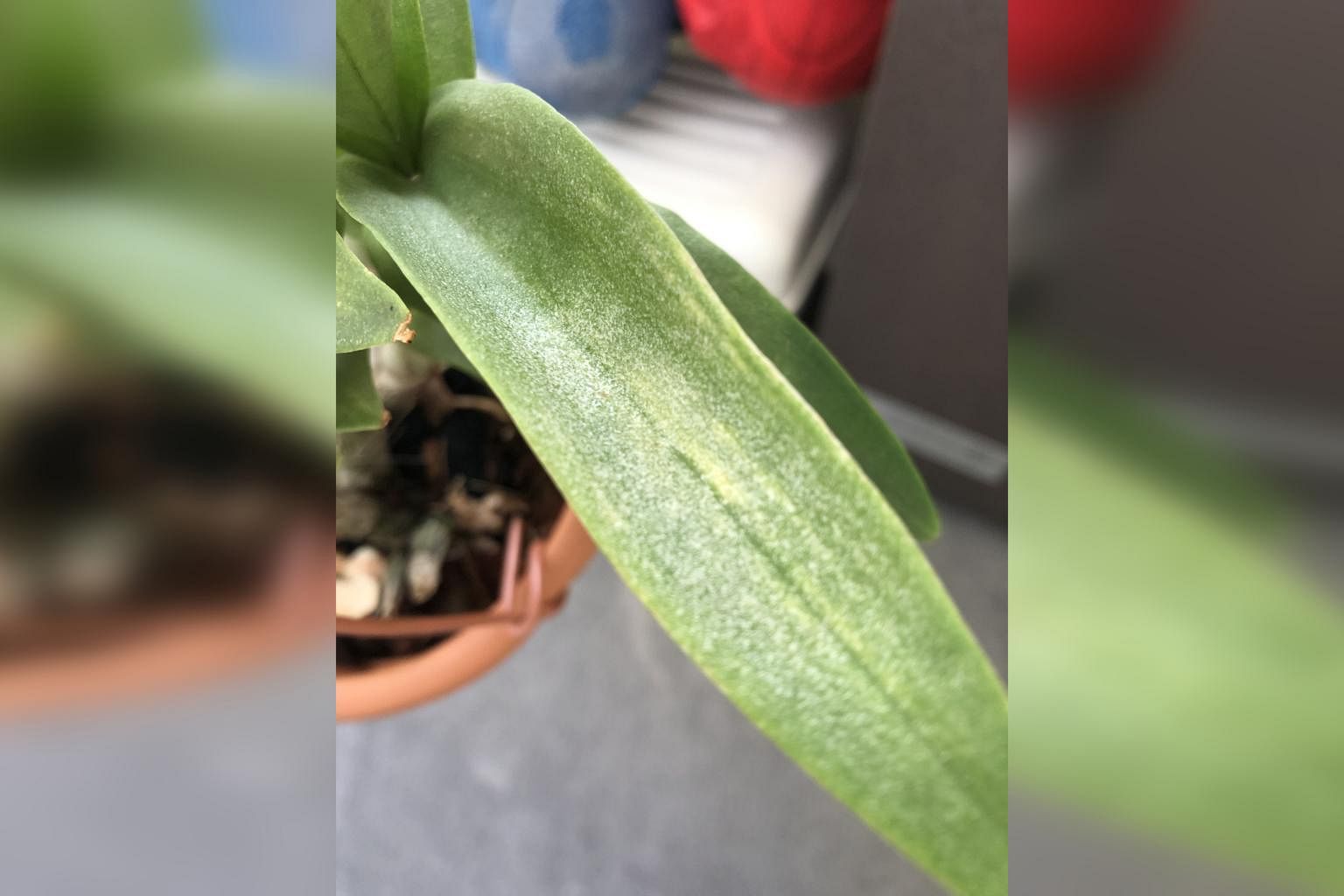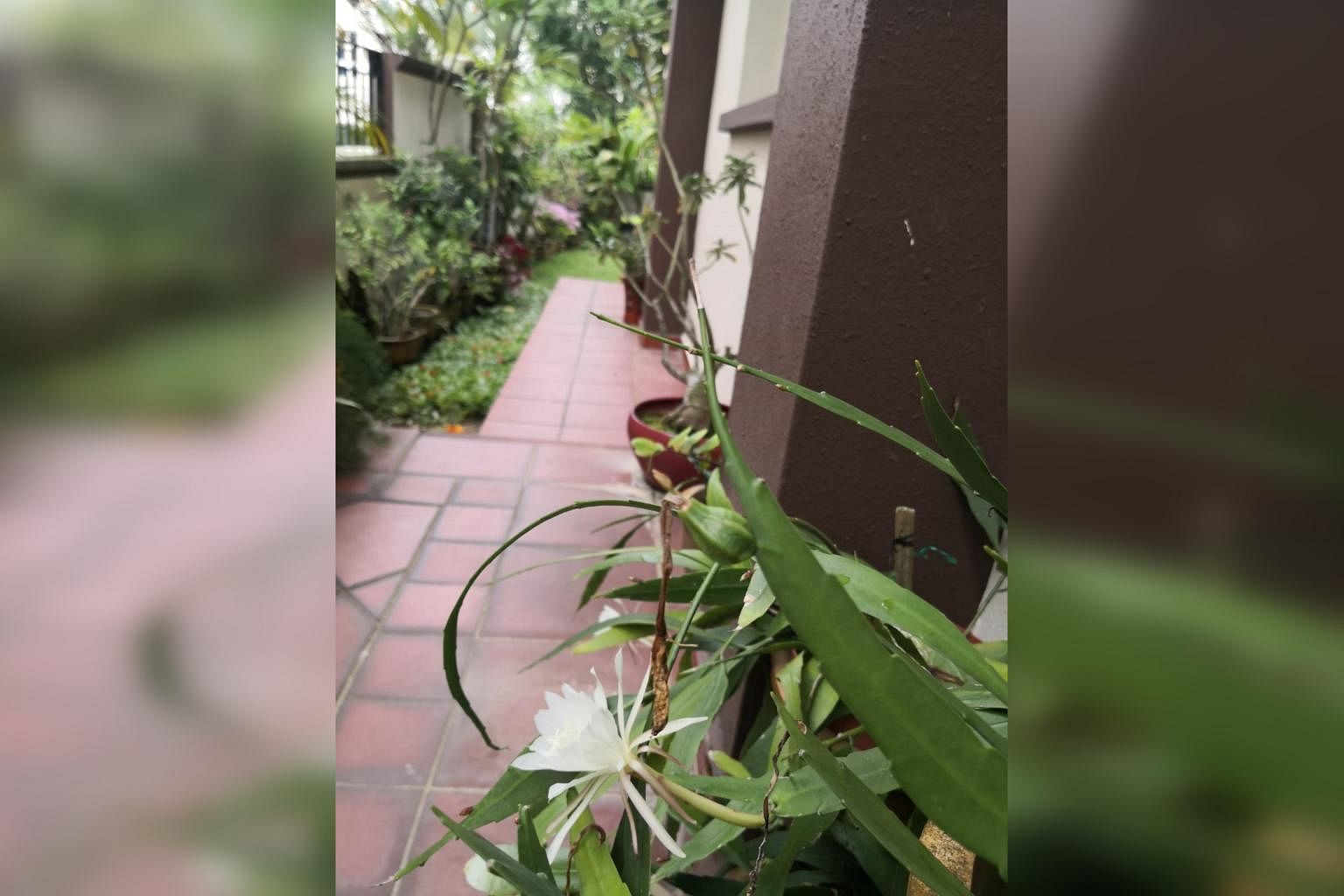Root Awakening: A wilting tomato plant, how to grow the ZZ plant and orchid leaves infested with spider mites
Sign up now: Get ST's newsletters delivered to your inbox

A wilting tomato plant.
PHOTO: AMANDA LIOK
Follow topic:
Tomato plant likely to be infected by soil-borne disease
My tomato plant was flowering. But after I stuck a stick in the soil to give it support in November last year, and following many days of rain recently, the stalk has bumps and the leaves are wilting. How can I save the plant?
Amanda Liok
Tomato plants are not tolerant of waterlogging and it is best to time the planting of this fruited vegetable plant during the drier season.
Tomatoes are also prone to soil-borne diseases if they are planted directly in the ground. If the plant is infected with disease, which is often systemic, it will not be practical to try to cure it.
It is best to grow tomatoes in containers with well-drained soil-less potting mixes with peat moss or cocopeat for this reason.
As such growing media do not have much nutrients, fertilisers will need to be added to promote robust growth.
ZZ plant is generally safe to grow as long as one does not touch the sap
Can you tell me more about the ZZ plant? I was told it is poisonous.
Maria Quek
The ZZ plant, botanically known as Zamioculcas zamiifolia, is a popular houseplant that is admired for its beautiful foliage and valued for its tolerance to shade. It is from the yam family (Araceae) and plants from this group are known to contain calcium oxalate crystals. These crystals can irritate the skin and mucous membranes.
As such, sensitive individuals should not come into contact with the sap of these plants, which is released when the plant is cut or injured.
Under normal circumstances, plants such as the ZZ plant and its relatives in the Araceae family are quite safe to grow at home, as long as people keep these plants away from children and pets that may accidentally break them, get in contact with its sap or even try to eat the plant parts.
Orchid leaves infested with spider mites

I observe that the leaves of my orchids are turning white, both on the upper and under sides. I water the plants every alternate day and they are placed near the recess windows. I also give them liquid fertilisers twice a week. What is the cause?
Won Wee Son
Your orchid leaves are likely infested with spider mites. These pests suck sap from the leaves and, under severe circumstances, the infested leaves develop white patches that are unsightly and plants can weaken.
Spider mites are common in high-rise apartments where it is windy and dry. They can be difficult to control.
You can try to mist your plants daily to increase the ambient humidity and to wash the pests off your plants with a jet of water.
An added control will require you to spray summer oil, an organic pesticide, that kills these pests by suffocating them.
Repeated applications of summer oil is a good way to keep pest populations down, to reduce visible damage to your orchid plants.
Propagate cactus with flattened stem sections

My friend gave me cuttings for this plant, which blooms at night and has a nice scent. How can I propagate and care for it?
Tanny Tait
The plant is botanically known as Epiphyllum pumilum.
It is an epiphytic cactus with flattened leaves, which can be cut and grown to produce new plants. If the leaf is long, cut it into sections of about 10cm each and grow them in a pot of well-draining media.
The growing media can consist equal parts of peat moss/coco peat, vermiculite and perlite.
Stem-cuttings can be placed in moistened media and in a bright but cool location until they start to root. Once new growth commences, the pot can be moved to a location with filtered sunlight.
Fertilise the plants with water-soluble or slow-release pellets.
Anthurium's spathe fade with age
I have two pots of anthurium outside my flat in the corridor. They get non-direct morning sunlight and I water once in three days or when the soil is dry. Why are the flowers fading? They used to be bright red.
Melvyn Peter D'Oliveiro
The colourful sail-like structure that grows below your anthurium inflorescence is botanically called the spathe. The actual flowers are tiny and produced on the rod-like spadix. It is normal the spathe will fade and die away with age.
To prevent premature decline, try to keep your plant hydrated and not let it wilt. Keep it in a ventilated and protected location to prevent injury by heavy rain and strong sunlight.
Finally, remember to remove dying inflorescences and keep the plant away from fumes that may contain ethylene gas - it can cause premature senescence of the inflorescences.
• Answers by Dr Wilson Wong, an NParks-certified practising horticulturist, parks manager and ISA-certified arborist. He is the founder of Green Culture Singapore and an adjunct assistant professor (Food Science & Technology) at the National University of Singapore.
• Have a gardening query? E-mail it with clear, high-resolution pictures of at least 1MB, if any, and your full name to stlife@sph.com.sg. We reserve the right to edit and reject questions.

